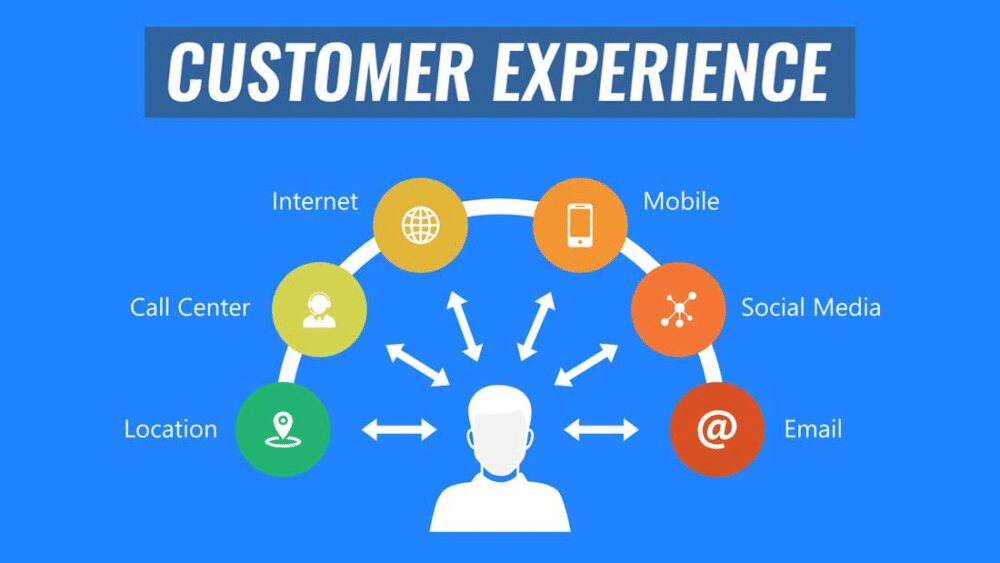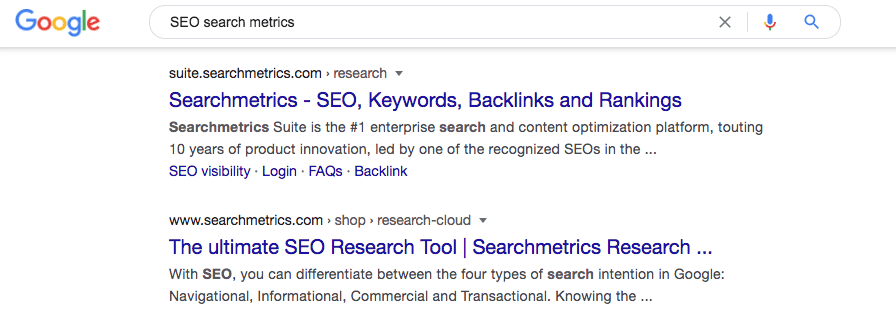As we move into the modern age, more and more shoppers are looking to make purchases online. Whether eCommerce business or SaaS product, your company needs to do everything in its power to ensure effective digital marketing. Nothing can boost a website marketing campaign like good old SEO.
At its heart, SEO is all about appealing to machines and algorithms. Your brand won’t stand a chance of connecting with your customers if the search engines can’t follow your website. Proper SEO will give the algorithms a map to guide them to the right search queries.
There are best practices for dealing with these machines to assure your website ranks near the top. However, no one is certain just exactly how the rankings are sorted and it’s likely the inner workings are always changing.
But any marketer also knows the importance of effective SEO in driving traffic to your website. Have you ever considered that SEO can give your customer’s a better shopping experience? In this article, we’ll look at how SEO relates to the customer experience.
What’s the connection between customer experience and SEO?
Customer experience is the sum total of interactions at every touchpoint on the customer journey. This journey can include everything from visiting a retail shop to interacting on social media to customer engagement with chatbots.
With so much choice for the consumer, businesses are increasingly differentiating themselves by focusing on the customer experience. For 73 percent of customers, brand loyalty is dependent on this.
While SEO can boost the visibility of your website among targeted SERPs, there is no guarantee a visitor will spend more than seconds on your page. Customers have a short attention span, and if they can’t easily find what they’re looking for, they will most likely move on. If the page isn’t relevant to their query, you’ll get the same result.
This means your bounce rate will go up, and your SERP rankings will drop.

Image source: Masters in Digital Media
In another example, a potential customer finds a website to be slow and unresponsive. Because of this, they abandon a purchase. And, likely, they don’t return to your eCommerce site for a long time, if ever again.
In either case, the website was boosted to the top of the rankings based on on-page SEO. However, the SEO rankings are hollow because customers aren’t getting what they need from the site. The search engines take into account several separate metrics that will denote this, and that high ranking is soon adjusted accordingly.
Therefore, from a different perspective, SEO is all about customer experience. The more users that land on your website and stay there, the better your Google rankings will be.
How SEO can improve customer experience
When we look at SEO best practices, we should think about how we can improve the online customer experience. By focusing on the customer, we can come up with digital strategies that boost SEO, for example, for marketing SaaS or any kind of small business.
Here’s how to do it.
1. Create excellent content and stay on top of it
Once a marketing strategy is in place, it can be easy to write landing pages and blog posts that are stuffed with keywords and other forms of search engine manipulation. But when customers visit a website, they can tell in about 10-20 seconds whether the content is high quality and relevant to their query.
For example, let’s say a user runs a search for “how to fax from email” and lands on your blog post. Make sure you give the customer multiple options for how to do so. Give them a comparative list of services offered online and, of course, make sure to include your own.
When possible, improve the focus on your users with eCommerce analytics tools. Even if customers choose a different service, they will be spending more than the average 10-20 seconds on your website by reading the entire article. This will generate better leads and improve your search rankings.
It also doesn’t pay to just come up with quality content. It should be done fairly consistently in order to keep up the progress which takes a lot of time and energy, do make sure you have the proper processes in place and enable your team with the necessary resources. Stay on top of the new flow of content creation with project management software.
2. Have a fast and responsive website
Perhaps this goes without saying, but internet users these days have come to expect fast and responsive eCommerce websites. There is not much point in crafting a SaaS SEO strategy if your customers can’t get anywhere promptly. And it won’t matter how great the content you produce is either.
So all of that time and effort put into market research, keywords, and content creation will amount to nothing. Sure, the algorithms will rank your website initially, but as your bounce rate sores through the roof, you will eventually drop off.
That’s not to mention all of the potential sales that could be lost to a slow-loading website. Good clean code is the only solution. Use Google’s PageSpeed Insights to test and optimize your website. Aim for loading speeds of two seconds or less.
3. User-friendly site architecture

Image source: vinaora
While loading times are a significant part of the online customer experience, there is more to it than just that. Make sure you have user-friendly site navigation. If visitors cannot find what they’re looking for, they are likely to bounce in a matter of seconds. Instead, give them clear content, highlight relevant terms, and make internal links easily visible.
For example, let’s say customers are looking for your SaaS product to fax online. Make sure they can easily get to the product page with pricing options visible. When users reach your high-quality blog post or listicle, utilize smart internal linking. Not only will it make finding your products and services easier, but it will show Google the importance of particular pages.
By leveraging internal linking, you will help search engine spiders map and index your new and recently updated web pages. Make sure your links aren’t forced but instead fit organically into relevant content. Otherwise, you will be defeating the purpose as customers are likely to leave pages with irrelevant content.
The search engine will reward you by ranking higher for the relevant SERPs and your potential customers will reward you with a better click-through rate (CTR) and conversions.
4. Get Local
For brick-and-mortar businesses, being local is in their blood. But even in the virtual world, your eCommerce sites can improve their search engine rankings by focusing on local SERPs. And businesses with multiple locations can benefit greatly by focusing on each geographic region. This is an important part of competitive SEO analysis.
An easy way to help your local customers find your business is to make sure you have your business name, address, and phone number listed on your website. This can be in under a Contact or About Us section. And it can also be listed on relevant landing pages.
Speaking of landing pages, consider having separate product or service pages for separate locations. For instance, if you are a communications company that provides a VoIP phone system, create a service landing page for each area code that you serve in.
This will help Google and potential customers more easily find you in their local areas. Your company will appear in long-tail location-specific SERPs and customers will find purchasing your services a breeze.
5. Reviews and snippets

Google’s featured snippet is a preview text that appears in SERPs below individual results. Normally, text with header tags like <H1> and <H2> will be in the featured snippet. And the text in the following paragraph will also be included.
Here is your chance to demonstrate the relevance of your page. One way to gain a rich snippet for a query is by having relevant headers and body content. But sometimes this isn’t enough! Often overlooked, user reviews can be the SEO boost that’s needed to edge your Google rankings to the top and get you featured as a review snippet.
Before encouraging users to submit feedback via reviews, however, you will first want to be confident in the customer experience you are providing. But once you’ve gone through that checklist, it’s time to be assertive and persistent. Customers rarely fill out review forms after a purchase.

What might surprise you is that 77 percent of consumers view a company more favorably if they seek feedback. It will help you to have effective strategies in place to encourage this. If your cloud communications platform is one of the best online collaboration tools, you need your customers to shout it from the rooftops.
Asking for a review at a more convenient time is easy if you find emails used by your customers. If the user has an account, this is simple to get hold of. Otherwise, a quick popup asking for an email address for reviewing at a later time can’t hurt. And of course, don’t forget to send a reminder or two. But be careful not to be annoying.
It doesn’t hurt to sweeten the deal by offering a gift or reward. Discount vouchers or free shipping on the next purchase can help to entice customer reviews. If all works according to plan, you will pile up the positive feedback.
It will help your website to feature this on relevant pages. Google spiders will index the reviews and improve your ranking. The review average will be featured in Google’s rich snippets, further enticing customers to visit your site. You will also be gaining valuable insights directly from your target audience on how to improve the customer experience even more.
Conclusion
Customer’s today are looking for more from the buyer experience. They are more loyal to brands that provide positive touchpoints, and they contribute a greater customer lifetime value to companies that prioritize them. All digital marketers are chasing an SEO pot of gold. Don’t let the complexities and ambiguities of SEO make you forget to focus on your customers.
Put yourself in their places and give them the best overall experience you can. In this way, your SEO will fall into place organically. Not only will you improve your Google rankings but you will also lower your bounce rate and increase your CTR. And, by providing a better experience, you retain loyal customers with greater lifetime value.
Originally published Mar 17, 2021, updated Aug 17, 2021

